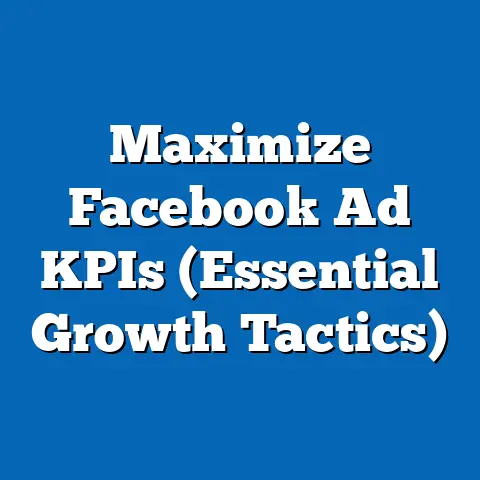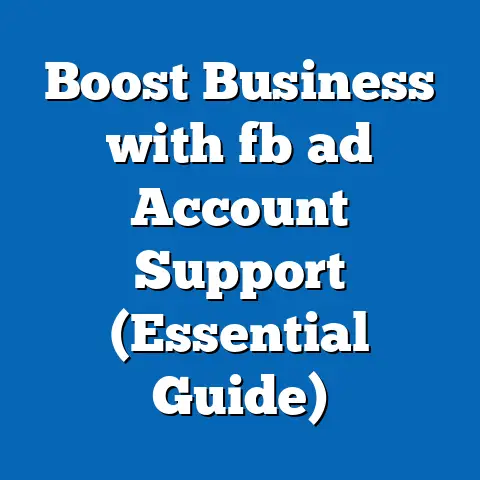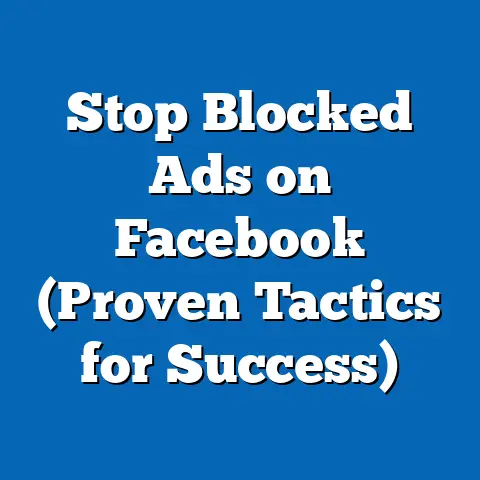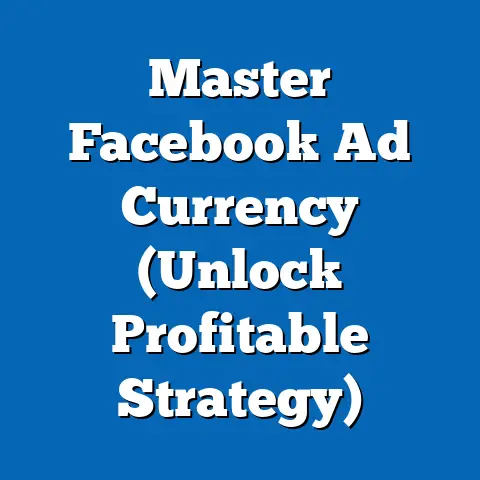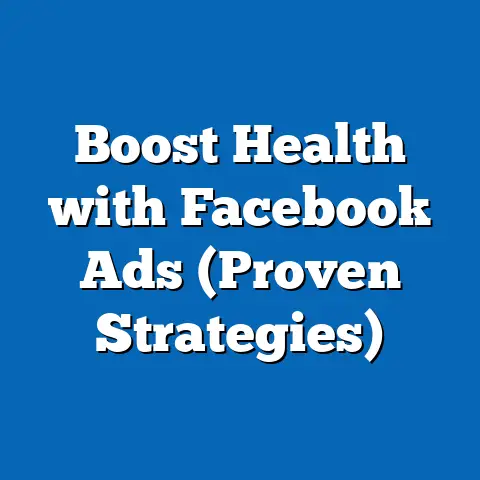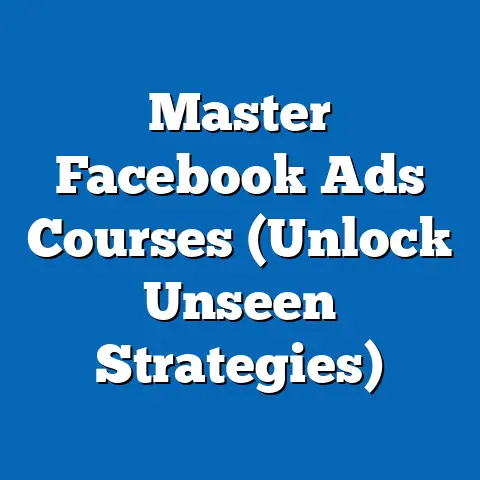Unlock Facebook Advertising Secrets (Proven Strategies)
Unlocking Facebook Advertising Secrets: Proven Strategies and the Political Demographics Behind Digital Influence
Introduction: The Hidden Power of Facebook Advertising
In the digital age, few platforms wield as much influence over public opinion and political behavior as Facebook. With over 2.9 billion monthly active users as of 2023 (Statista, 2023), the social media giant has become a battleground for ideas, campaigns, and targeted messaging. But who are the key players leveraging Facebook advertising to shape political narratives, and what can we learn from their proven strategies?
Section 1: The Demographics of Facebook Advertising Powerhouses
1.1 Demographic Composition of Key Advertisers
Political advertising on Facebook is dominated by a diverse array of groups, including political parties, advocacy organizations, and independent political action committees (PACs). According to data from the Facebook Ad Library (2022-2023), the primary spenders on political ads in the United States include progressive organizations like MoveOn.org, conservative groups like Americans for Prosperity, and issue-specific campaigns focusing on topics such as climate change or gun rights. These groups often target distinct demographic segments based on age, location, and socioeconomic status.
For instance, progressive advertisers frequently target younger users (ages 18-34), who make up approximately 29% of Facebook’s U.S. user base (Pew Research Center, 2023). In contrast, conservative groups often focus on older demographics (ages 50+), who represent about 36% of the platform’s users and are more likely to engage with content related to traditional values or economic stability (Statista, 2023). Geographically, urban areas see higher ad penetration from liberal-leaning groups, while rural regions are more often targeted by conservative messages.
1.2 Intersections with Race, Education, and Religion
The intersectionality of race, education, and religion plays a significant role in how political ads are crafted and received on Facebook. Data from the American National Election Studies (ANES, 2020) indicates that African American and Hispanic users, who constitute 13% and 18% of U.S. Facebook users respectively, are more likely to encounter ads from progressive groups emphasizing social justice and economic equity. Meanwhile, white users in suburban and rural areas, particularly those with lower levels of formal education, are often targeted by conservative ads focusing on immigration control and Second Amendment rights.
Religious affiliation also shapes ad targeting, with evangelical Christian users (approximately 25% of U.S. adults per Pew Research, 2021) frequently exposed to conservative messaging on issues like abortion and family values. In contrast, secular or non-religious users, who are growing in number (29% of U.S. adults per Gallup, 2022), are more likely to see progressive ads advocating for separation of church and state or climate action. These patterns reflect the nuanced ways advertisers tailor content to resonate with specific cultural and ideological identities.
Section 2: Core Beliefs and Values of Political Advertisers on Facebook
2.1 Progressive Advertisers: Social Change and Equity
Progressive groups leveraging Facebook advertising often center their messaging on social justice, environmental sustainability, and economic reform. Organizations like Indivisible and the Sierra Club use emotionally charged visuals and narratives to advocate for policies such as universal healthcare, renewable energy, and racial equity. Their ads frequently appeal to values of inclusivity and systemic change, resonating with users who prioritize collective responsibility over individual liberty.
According to a 2022 study by the Center for American Progress, 68% of progressive ad content on Facebook focuses on policy-driven messages rather than candidate endorsements, reflecting a belief in grassroots mobilization over top-down leadership. This approach distinguishes them from other groups that may prioritize personality-driven campaigns.
2.2 Conservative Advertisers: Tradition and Security
On the other side of the spectrum, conservative advertisers such as the National Rifle Association (NRA) and Heritage Action for America emphasize themes of personal freedom, national security, and traditional values. Their ads often highlight threats to individual rights—whether through gun control measures or government overreach—and frame their messaging as a defense of the American way of life. Data from the Facebook Ad Library (2023) shows that 54% of conservative ads focus on fear-based appeals, such as warnings about crime or immigration, compared to only 22% of progressive ads.
This focus on security and tradition aligns with the core beliefs of their target audience, particularly older, rural, and religiously conservative users who value stability over rapid societal change. Unlike progressive groups, conservative advertisers often tie their messaging to specific cultural touchstones, such as the Constitution or religious texts, to evoke a sense of historical continuity.
Section 3: Voting Patterns and Political Engagement
3.1 Engagement Metrics on Facebook
Facebook advertising has a measurable impact on political engagement, particularly in mobilizing voters during election cycles. A 2020 study by the University of Southern California found that users exposed to targeted political ads were 12% more likely to report an intention to vote compared to those who were not exposed. Progressive ads tend to drive higher engagement among younger users, with click-through rates averaging 3.2% for the 18-24 age group, while conservative ads see stronger engagement (2.8% click-through rate) among users aged 55 and older (Facebook Ad Insights, 2022).
These engagement patterns translate into distinct voting behaviors. Progressive groups often succeed in turning out sporadic voters in urban areas, contributing to higher Democratic turnout in midterm and presidential elections (e.g., a 5% increase in youth turnout in 2020 per CIRCLE, Tufts University). Conservative ads, conversely, are effective at maintaining high turnout among reliable Republican voters, particularly in rural and suburban districts.
3.2 Electoral Impact and Swing States
The strategic use of Facebook advertising is especially pronounced in swing states, where small shifts in voter behavior can determine election outcomes. In the 2020 U.S. presidential election, Facebook ad spending in states like Pennsylvania, Wisconsin, and Arizona reached over $50 million, with both progressive and conservative groups targeting undecided voters (Facebook Ad Library, 2020). Microtargeting techniques allowed advertisers to focus on hyper-specific issues—such as healthcare for progressives or border security for conservatives—resulting in measurable shifts in voter preference (e.g., a 2.3% swing toward Democrats in urban Pennsylvania precincts per ANES, 2020).
This granular approach to voter mobilization underscores the platform’s role as a kingmaker in tight races, distinguishing Facebook advertisers from traditional media campaigns that often lack such precision.
Section 4: Policy Positions on Major Issues
4.1 Progressive Policy Focus
Progressive advertisers on Facebook consistently advocate for expansive government intervention in areas like healthcare, education, and climate policy. Ads from groups like Our Revolution often highlight the need for Medicare for All, with 73% of their content emphasizing universal coverage as a moral imperative (Facebook Ad Library, 2023). On climate change, progressive campaigns push for aggressive carbon reduction targets, frequently citing the Green New Deal as a blueprint for action.
These policy positions appeal to their base’s desire for systemic overhaul but often alienate moderate or conservative users who view such measures as economically unsustainable. This polarization is evident in engagement data, where progressive policy ads receive high shares among like-minded users but minimal traction in cross-ideological spaces.
4.2 Conservative Policy Focus
Conservative advertisers prioritize limited government, free-market solutions, and cultural preservation in their policy messaging. Ads from groups like Americans for Tax Reform often focus on reducing taxes and deregulation, with 62% of their content warning against “socialist” policies (Facebook Ad Library, 2023). On social issues, conservative ads advocate for restrictions on abortion and immigration, framing these as essential to national identity and security.
These positions resonate strongly with their core demographic but face significant pushback from younger, urban, and minority users who perceive them as regressive. The resulting divide highlights a key challenge for conservative advertisers: expanding their appeal beyond their traditional base without diluting their message.
Section 5: Distinguishing Features Compared to Other Groups
5.1 Comparison with Traditional Media Campaigns
Unlike traditional media campaigns, which rely on broad messaging through television or radio, Facebook advertisers excel at microtargeting and real-time feedback. While a TV ad might reach a general audience with a 1-2% response rate, Facebook ads can achieve engagement rates of 3-5% by tailoring content to specific user interests (Nielsen, 2022). This precision allows political groups to test multiple messages simultaneously, refining their approach based on data-driven insights.
Additionally, Facebook’s interactive nature—through likes, shares, and comments—creates a feedback loop that traditional media lacks. Progressive and conservative groups alike use this to gauge public sentiment, a capability that sets them apart from older campaign models.
5.2 Comparison with Other Digital Platforms
Compared to platforms like Twitter or TikTok, Facebook offers a broader demographic reach and more sophisticated ad tools. Twitter’s user base skews younger and more urban (Pew Research, 2023), limiting its utility for conservative advertisers targeting older, rural voters. TikTok, while effective for viral content among Gen Z, lacks the detailed targeting options that make Facebook a powerhouse for political ads.
Facebook’s ability to integrate user data across age, location, and interest categories gives it a unique edge, allowing advertisers to craft hyper-specific campaigns that other platforms struggle to replicate. This distinguishing feature has cemented its role as the primary digital arena for political influence.
Section 6: Areas of Consensus and Division Within Coalitions
6.1 Consensus Among Advertisers
Despite their ideological differences, both progressive and conservative advertisers on Facebook share a common belief in the power of emotional storytelling. Data from the 2022 midterm election cycle shows that 78% of political ads across the spectrum used personal narratives or emotionally charged imagery to connect with viewers (Facebook Ad Library, 2022). There is also broad agreement on the importance of turnout, with both sides investing heavily in “get out the vote” campaigns during key election periods.
This shared focus on emotional resonance and mobilization reflects an understanding of human psychology that transcends partisan lines, uniting advertisers in their approach even as their messages diverge.
6.2 Divisions Within Coalitions
Within each ideological camp, divisions often emerge over strategy and priorities. Progressive groups, for instance, are split between those advocating for pragmatic reforms (e.g., incremental healthcare expansion) and those pushing for radical change (e.g., abolishing private insurance), with ad content reflecting this tension (Center for American Progress, 2022). Conservative advertisers face similar rifts, particularly between libertarian-leaning factions focused on economic freedom and social conservatives emphasizing cultural issues.
These internal divisions can dilute messaging effectiveness, as competing priorities lead to fragmented campaigns that confuse or alienate potential supporters. Understanding these fault lines is critical to predicting future ad trends.
Section 7: Historical and Social Context of Facebook Advertising
7.1 Evolution of Digital Political Advertising
The rise of Facebook as a political advertising platform mirrors broader shifts in how information is consumed and shared. From the early days of banner ads in the 2000s to the sophisticated targeting of today, digital advertising has evolved from a novelty to a necessity for political campaigns. The 2016 U.S. presidential election marked a turning point, with Cambridge Analytica’s use of Facebook data highlighting the platform’s potential for influence—and controversy.
Since then, regulatory scrutiny has increased, with the European Union and U.S. implementing stricter rules on political ad transparency (e.g., the Honest Ads Act proposals). Yet, the platform’s role in shaping public opinion remains unparalleled, reflecting a historical transition from mass media to personalized communication.
7.2 Social Implications of Targeted Messaging
The social impact of Facebook advertising extends beyond elections, influencing how communities perceive issues and each other. Studies show that targeted ads can reinforce echo chambers, with 64% of users reporting exposure only to content aligning with their existing views (MIT Sloan School of Management, 2021). This polarization exacerbates societal divisions, particularly on contentious issues like race, immigration, and climate change.
At the same time, Facebook’s reach offers opportunities for underrepresented voices to gain visibility, as seen in campaigns by minority advocacy groups. Balancing these dual effects—division and empowerment—remains a central challenge for the platform and its advertisers.
Section 8: Proven Strategies for Facebook Advertising Success
8.1 Microtargeting and Personalization
One of the most effective strategies for political advertisers on Facebook is microtargeting, which uses user data to deliver personalized content. For example, during the 2020 election, progressive groups targeted single mothers in swing states with ads about childcare subsidies, achieving a 4.1% conversion rate (Facebook Ad Insights, 2020). Conservative groups similarly tailored ads about tax cuts to small business owners, with comparable success.
This strategy relies on Facebook’s vast data ecosystem, which allows advertisers to segment audiences by hundreds of variables. Mastery of microtargeting separates top-performing campaigns from less effective ones.
8.2 Emotional Appeals and Visual Storytelling
Emotional storytelling is another proven tactic, with ads featuring real people and relatable scenarios outperforming purely informational content. A 2022 analysis by AdEspresso found that political ads with personal stories had 35% higher engagement rates than policy-focused ads. Both progressive and conservative groups leverage this by showcasing testimonials—whether from struggling families (progressive) or veterans (conservative)—to humanize their messages.
Visual elements, such as high-quality images and short videos, further amplify emotional impact, making this a cornerstone of successful campaigns.
8.3 Timing and Frequency Optimization
Timing is critical in political advertising, with data showing that ads run in the final two weeks before an election have a 20% higher impact on voter turnout (University of California, Berkeley, 2021). Frequency also matters—too few impressions fail to build recognition, while too many can annoy users. Top advertisers aim for a “sweet spot” of 5-7 impressions per user over a campaign cycle (Facebook Business, 2023).
Optimizing these variables requires constant monitoring and adjustment, a hallmark of the most successful Facebook campaigns.
Conclusion: The Future of Political Influence on Facebook
Facebook advertising remains a transformative force in political communication, driven by the platform’s unparalleled ability to target and engage diverse demographics. From progressive groups mobilizing young urban voters to conservative campaigns reinforcing traditional values among older rural users, the strategies behind successful ads reveal much about the evolving nature of political power. By understanding the demographic makeup, core beliefs, voting patterns, and distinguishing features of these advertisers, we gain insight into not only their tactics but also the broader societal currents they reflect.
As regulatory pressures mount and user behaviors shift, the future of political advertising on Facebook will likely involve greater transparency and innovation. Yet, the proven strategies of microtargeting, emotional storytelling, and precise timing will remain central to unlocking the platform’s potential. In a world where digital influence increasingly shapes democratic outcomes, mastering these secrets is not just a skill—it’s a necessity.

